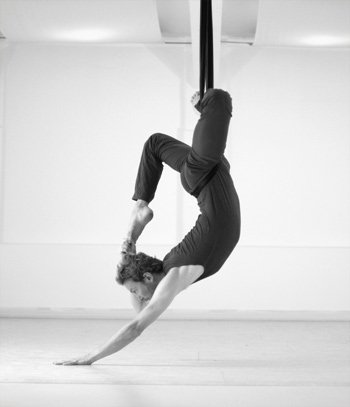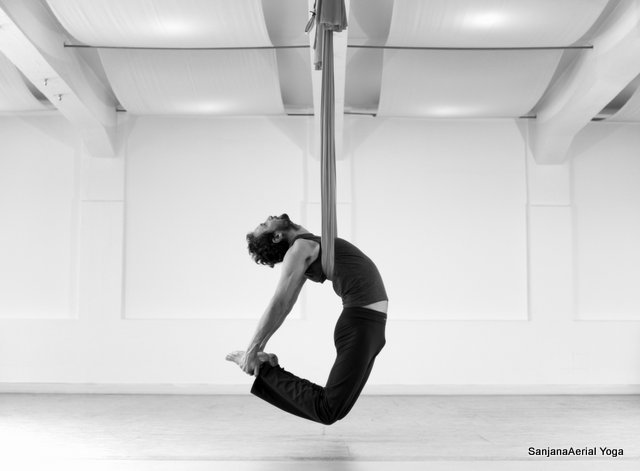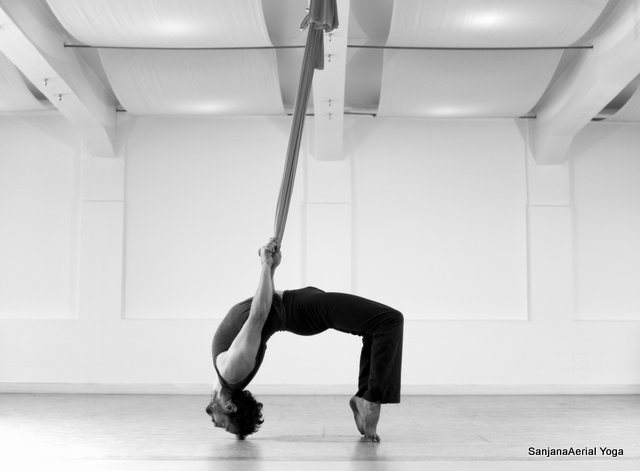 How to tell the difference between Aerial Arts and Yoga ?
How to tell the difference between Aerial Arts and Yoga ?
Aerial Arts and Yoga are two separate disciplines, with obvious different goals. The first evolved from the circus arts, where the focus lies on the performance, while the nature of the second is personal development.
At a time when every type of exercise started to use the word Yoga for marketing & with the realization that there are certain parallels in the excercises, and that an aerial artist can pretty easily perform yogaasana, aerial yoga was born, with the hammock as the tool of choice.
This evolution, from the Aerial Arts into Yoga, can have a few drawbacks.
In Aerial Arts the finished pose is the focus, as well as the amount of different show-poses one can do.
The poses are put into wonderful choreograpies, once the practitioner is advanced enough, and there is the tendency to stay in the hammock (high off the ground after all) and perform trick after trick to a fascinated audience.
A beautiful artistic performance.
In a Yoga setting though, this original focus on the performance is rather misplaced.
- It will make the teacher try to teach more tricks to an audience that expects to learn exactly that.
- It focuses on the techniques of each pose, on a choreography, and the final pose.This leads the students to try to imitate a shape, an outwards focus.
- There is a stronger tendency to attach scores, from good to bad, from i am good to i am not good enough, to the pose - that are selfdefining instead of exactly the opposite.
Instead yoga is a process of discovery of oneself, a process of the mind & spirit with the aid and pleasure of the body.
- We have no need of tricks, but enjoy every bit of every detail of the practice. Some looks simple and some look very acrobatic and difficult. Within each is the pleasure of experiencing it with full awareness.
- The elements of movement and breath are of primary importance. The pose happens as a process of movement, and the process is what matters. It is in the present moment and inside.
- We focus inwards, into understanding the purpose of the direction the shape asks us to work towards, and how this purpose can be used to work on ourselves. There is a reflection of this onto the outside, but the goal is the inner change, and not the outer. The outer may happen, or not. The inner is the one we are concerned with.
- The opposite of scores : We define the pose, not the pose us. We wish to liberate ourselves from the goal and instead enjoy the practice as we are.
There will be changes in flexibility and therefore outwards appearance of asana, but this does not matter in the least, unless you make it so, with an outwards focus. (Yes that does happen in a floor class as well ... media and marketing do their job, and photos are meant to appeal to our perception of 'good' - also on this homepage, btw.
In an Aerial Yoga class, the practice will therefore involve the floor a lot, it will be about the direction of movement instead of taking a position in space alone, it will be about breath with movement, and about reflecting on what the practice is doing to us. There will be an effort to balance and center the body, and usually it will be easier to learn.
Still there will be effort, there may be sweat, there may be difficulties. We are working on ourselves after all. We may enjoy a workout in the process as well. This is where the similarities begin :)
And then, also, having said all the above.... Yoga can be discovered, at some point in an advancing practice, also by those who intensely work on themselves & train for a good show. It usually starts when we stop punishing ourselves, and let pleasure do its work.


